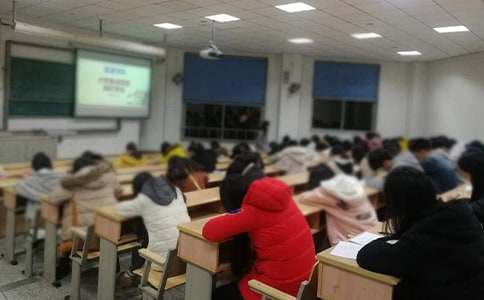- 相关推荐
2015年职称英语考试《综合类》语法汇总
疑问代词

1)疑问代词在句中起名词词组的作用,用来构成疑问句。疑问代词有下列几个:
指人:who,whom,whose
指物:what
既可指人又可指物:which
2)疑问代词在句中应位于谓语动词之前,没有性和数的变化,除who之外也没有格的变化。what,which,whose还可作限定词。试比较:
疑问代词:
What was the directional flow ofU.S.territorial expansion?美国的领土扩张是朝哪个方向的?
限定词:
What events led to most of the east of theMississippi River becoming part of theUnited States?哪些事件使密西西比河以东的大部分土地归属于美国?
注意:
1)无论是做疑问代词还是限定词,which 和 what 所指的范围不同。what所指的范围是无限的,而which则指在一定的范围内;
2)Whom是who的宾格,在书面语中,它作动词宾语或介词宾语,在口语中作宾语时,可用who代替,但在介词后只能用who;
3)疑问代词用于对介词宾语提问时,过去的文体中介词和疑问代词通常一起放在句首,现代英语中,疑问代词在句首,介词在句未;
4)疑问代词还可引导名词性从句。
关系代词
1)关系代词用来引导定语从句。它代表先行词,同时在从句中作一定的句子成分,例如:The girl to whom I spoke is my cousin. 跟我讲话的姑娘是我表妹。(该句中whom既代表先行词the girl,又在从句中作介词to的宾语。)
2)关系代词有主格,宾格和属格之分,并有指人与指物之分。在限定性定语从句中,that 可指人也可指物
例如:
This is the pencil whose point is broken.这就是那个折了尖的铅笔。(whose 指物,在限定性定语从句中作定语)
He came back for the book which he hadforgotten.他回来取他丢下的书。(which指物,在限定性定语从句中作宾语,可以省略)
3)关系代词which的先行词可以是一个句子,例如:
He said he saw me there, which was a lie.他说在那儿看到了我,纯属谎言。
不定代词
all,both,every,each,either,neither,more,little,few,much,many,another,other,some,any,one,no 以及some,something,anything,everything,somebody,someone,anybody,anyone,nothing,nobody,noone,none,everybody,everyone.等。
2)不定代词的功能与用法
a.除every 和no外不定代词既可用作名词,也可用作形容词。every和no在句中只能作定语。
b.all 都,指三者以上。
all 的主谓一致:all的单复数由它所修饰或指代的名词的单复数决定。
All goes well. 一切进展得很好。
all 通常不与可数名词单数连用,如:不说all thebook,而说 the wholebook.
但all可与表时间的可数名词单数连用,如all day,all night,all the year;但习惯上不说 all hour,all century.
all还可以与一些特殊的单数名词连用,如all China,all the city, all my life,all the way
3)both 都,指两者。
a.both 与复数动词连用,但 both… and…可与单数名词连用。
b.both,all 都可作同位语,其位置在行为动词前,be 动词之后。如果助动词或情态动词后面的实义动词省 去,则位于助动词或情态动词之前。
4)neither 两者都不
a.neither作主语时,谓语动词用单数。
b.作定语与单数名词连用,但neither… nor 用作并列连词,可与复数名词连用。其谓语采用就近原则。
c.可用于下列句型,避免重复。
neither 与nor
d.如前句是否定式从句,则主句用neither而不用nor
If you don't do it,neither should I.如果你不干,我也不干。
e.如后连续有几个否定句式,则用nor不用neither
He can't sing,nor dance,nor skate.
一、none无
1)none作主语,多与of 构成短语 none of.在答语中,none可单独使用。
2)none作主语,谓语动词单复数均可。但如做表语,则其单复数与表语一致。
二、few 一些,少数
few 作主语时,谓语动词用复数,多用于肯定句。
三、some 一些
1)可与复数名词及不可数名词连用。
2)当做“某一”解时,也可与单数名词连用。(= a certain)
四any 一些
1)any 多用于否定句和疑问句和条件状语从句中。
当句中含有任何的意思时,any可用于肯定句。
Here are three novels.You may read any.这有三本小说,你可任读一本。
五、one,ones 为复数形式
ones必须和形容词连用。如果替代的名词时无形容词在前,则用some,any而不用ones
both,either,neither,all,any,none
这些词都可用作代词或形容词。其位置都在be 动词之后,行为动词之前或第一助动词之后。
1) both(两者都),either(两者中任何一个),neither(两者都不)。以上词使用范围为两个人或物。
Neither of the two boys is clever. 两个男孩都不聪明。
2)both,either
both与复数连用,either与单数连用。
Both the boys are clever.两个男孩都很聪明。
Either of the two boys is clever. 两个男孩都很聪明。
There are flowers on both sides of thestreet.(两岸)
There are flowers on either side of thestreet.(岸的两边)路边长满了野花。
3)all(所有的,全部的人或物),any(任何一个),none(都不)。 以上词使用范围为三者以上。
All the flowers are gone.所有的花都谢了。
I don't like any of the flowers.这些花我都不喜欢。
I like none of the flowers.这些花我都不喜欢。
注意:all与none用法一样。跟单数名词,用单数动词;跟复数名词,用复数动词。
All of the students are there.
所有的学生都在那。
All(of)the milk is there.
所有的牛奶都在那。
名词的数
1、名词的可数和不可数:
与汉语不同,英语中名词要区分可数与不可数。
笼统地讲,物质名词,如:water(水), iron(铁), wood(木头)等,和抽象名词,如:democracy(民主), freedom(自由), happiness(幸福)等为不可数。
不可数名词前不能加a(an),后面不能加s (es),这是考试中对此类题目判断的重要依据。
2、以下名词为不可数名词:
news(消息) information(信息)
furniture (家具) equipment(设备)
advice (劝告) weather(天气)
work(工作) clothing(衣服)
baggage(行李)
work作“工作” 解释时为不可数名词,“找工作”不能说to find a work, 应为to find a job; work作“着作”、“作品”解时是可数名词,如:Deng Xiaopin'sworks (邓小平着作)/ a workabout Deng.
Xiaopin (一件关于邓小平的作品);作 “工厂”解释时,单复数同形:a steel works (一个钢铁厂) / two chemical works(两家化工厂)
实例:
We have a large staff but there ______ inthe office.
A. haven't many furnitures
B. aren't many furnitures
C. hasn't much furniture
D. isn't enough furniture
解题思路:根据名词数的概念A、B肯定错,不必考虑;C、D的主要差异是“hasn't”与 “isn't”, 句子中有there,说明该句是there be句型,故正确答案为D.题中staff, office 等词与解题无关。
注意辨别句子中斜体词的数及其意义:
There is still much room for improvement. (仍有许多改进的余地)
He has published two important papers onthis subject. (他在这个课题上已发表了两篇重要论文。)
3、以下名词单复数同形:
means(手段) headquarters(司令部)
works(工厂) species(物种)
aircraft(飞机) Chinese(中国人)
sheep(羊) fish(鱼)
中国的计量单位:li(里), yuan(元), mu(亩)等
实例:
Every means has been tried out, but without satisfactory results.(每个方法都试过了,但结果不令人满意。)
4、形式上是复数的学科名称,如physics , statistics, dynamics 作单数看待;时间、距离、钞票、重量等复数,可以看作一个整体作单数处理,如:Two days is not enough for me to finish the task. (要我完成此项任务两天是不够的。)
5、名词做另一名词的修饰语:
一般用单数形式,如:acollege student中的college 为单数形式。
注意:
(1) 以下名词做另一名词修饰语时要用复数形式:sport → a sportsman(运动员)/ sale → a sales department(销售部) / savings → a savings account (储蓄存款)/ communication → a communications satellite (通讯卫星) / greeting → a greetings →cable(慰问电)
(2) 不规则名词修饰另一名词时数的变化:a woman doctor (一个女医生) → two womendoctors (两个女医生) / theChinese women's volleyball team (中国女排) / a children →hospital (儿童医院)
6、family(家庭), group(小组), police(警察),committee(委员会), team(组), box(盒), audience(观众)等词,可以是单数,也可以是复数,关键要看题目所给的提示,例如:
The whole box of matches _____ wet; Icouldn't light a simple one
A. was
B. is
C. were
D. are
解题思路:这道题如果没有后半句I couldn't light a simple one,是没办法解答的。这句话提示了两点:
(1)时态为“过去时”,故B、D已不可能了;
(2)“a simple one”说明是指盒子内的一根根火柴,故答案为C.试想,如果我们把后半句改为 “I had to throw it away”,那么正确答案应是A.
所以,看清题目的提示对于解题是非常重要的。
7、注意以下表达方式中名词的复数形式
to be / make friends with(友好 / 交朋友)
to change places with (交换位置)
to make preparations for(为…作准备)
to give regards to(向…问好)
to make matters worse(把事情弄糟)
to hurt feelings(伤害感情)
to be all smiles(满脸堆笑)
to take sides (偏袒某方)
to have words with(吵架)
to burst into tears (突然哭了)
8、量词的使用:
由于英语中名词分可数与不可数,量词的使用也有区别:
修饰可数名词
(a) few / fewer / fewest
many / more / most
a great (good) many
many a
a number of
the number of
既可修饰可数名词 也可修饰不可数名词
a lot of / lots of
plenty of (time, money, people)
修饰不可数名词
(a) little / less / least
much / more / most
a great (good) deal of
an amount of / amounts of
http://www.cnrencai.com/【职称英语考试《综合类》语法】相关文章:
